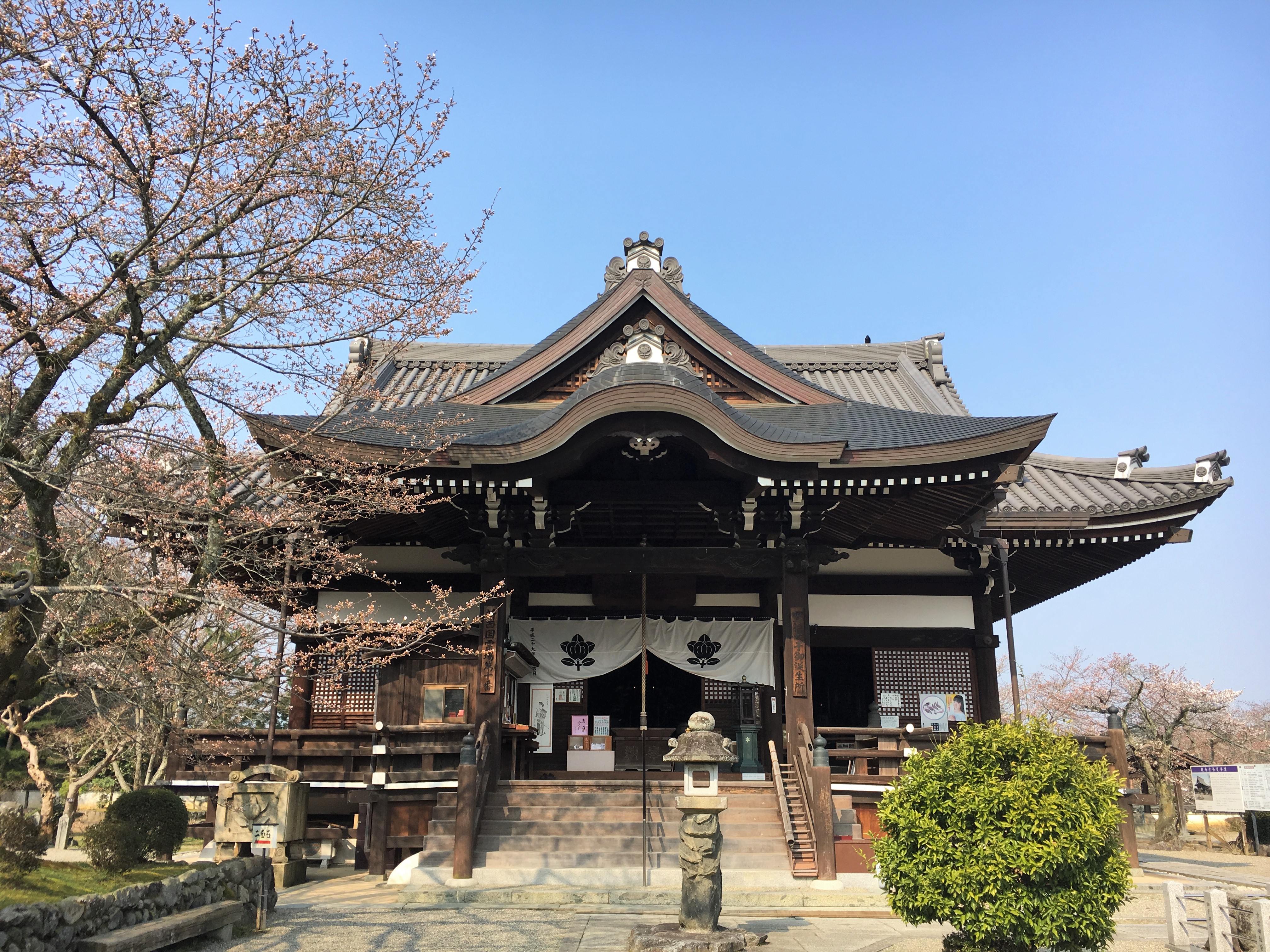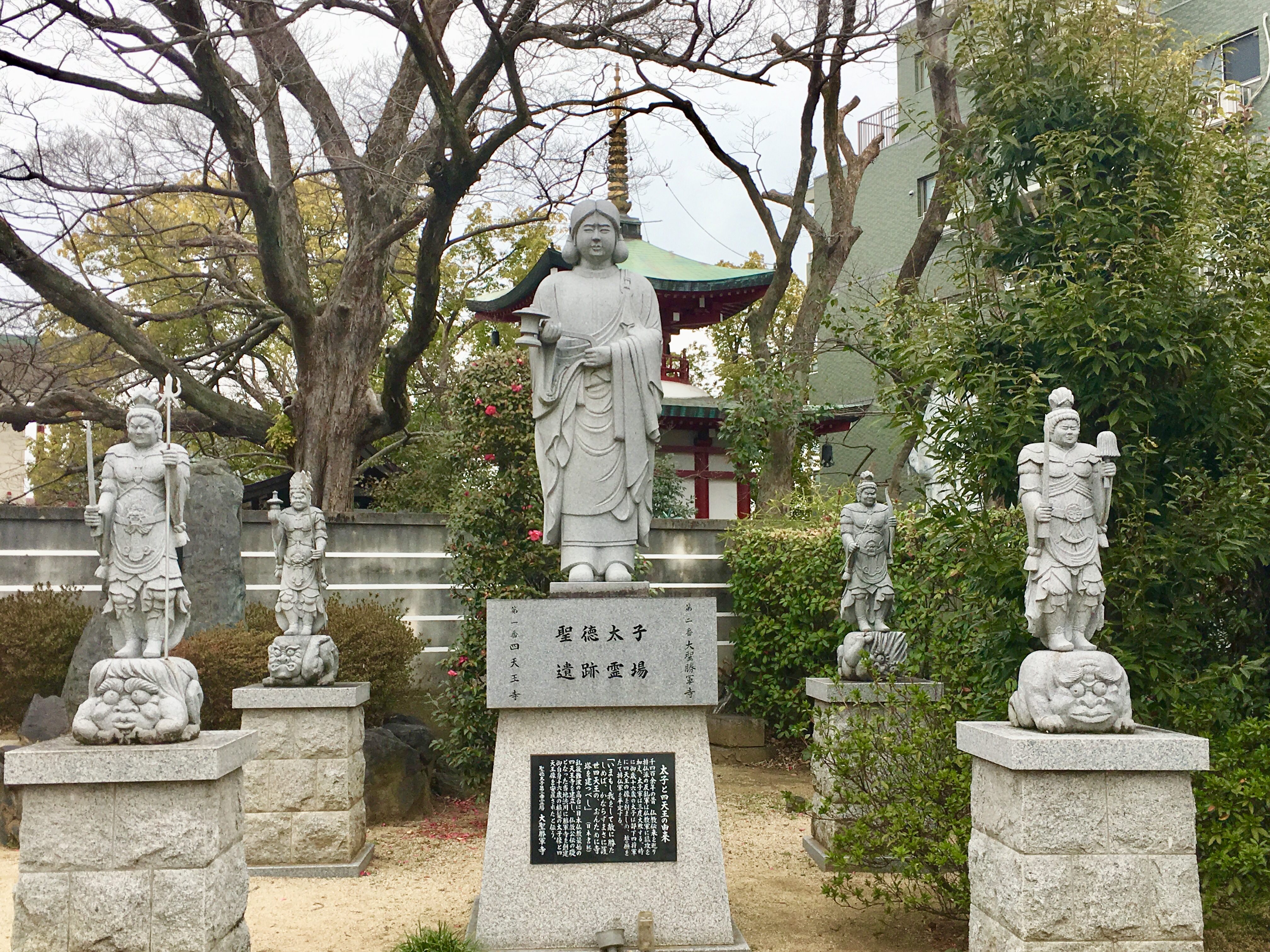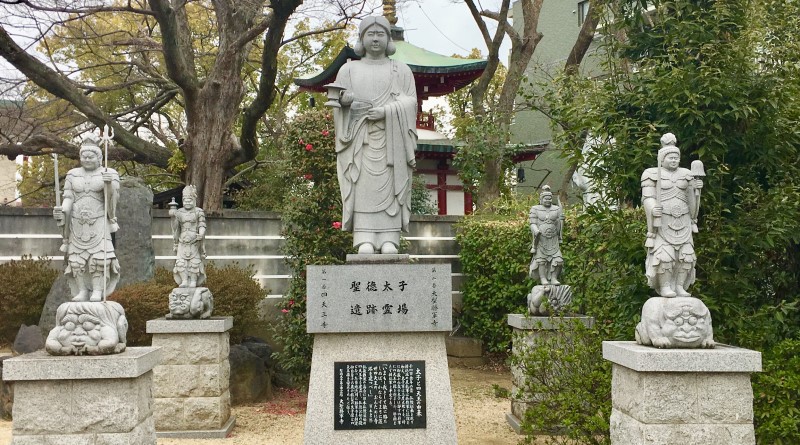Japan’s Prince of Legend? Prince Shotoku
If you had to pick the most famous historic figure in Japan, who would it be? Some might pick Oda Nobunaga or Toyotomi Hidieyoshi, but many Japanese would say that without a doubt, the most famous is Prince Shotoku. Prince Shotoku played a major role in introducing Buddhism to Japan and made many famous Buddhist temples, including Shitenno-ji and Horyu-ji. Without him, it is likely Buddhism would have never taken root in Japan. He has even made multiple appearances on Japanese currency!
The Beginning of Prince Shotoku

Prince Shotoku, also known as Prince Umayado, was born in 574 C.E. to the 31st emperor, Emperor Yomei. It seems Shotoku was a boy of numerous talents. Not only did he play a major role in war as a teen, but also become a politically competent regent at 19.
The War for Buddhism
While Shotoku was just a child, Japan was wrestling with its spirituality. Buddhism was new to Japan and many argued as to whether or not this new faith should be accepted. In particular, the Soga clan (led by Soga no Umako), who were also relatives of Prince Shotoku, were willing to accept Buddhism. Opposition came from the Mononobe clan, (led by Mononobe no Moriya) who adamantly rejected Buddhism. The Mononobes insisted that Japan didn’t need a new religion and that this heresy might anger the Shinto gods.
The situation worsened after the death of Emperor Yomei. Soga no Umako and Mononobe no Moriya quarreled over who was next in line for the throne, eventually leading to war. Prince Shotoku sided with the Soga clan during this conflict, and supported the acceptance of Buddhism. Though the Soga clan was able to acquire many political leaders to their cause, the Mononobe clan more than held their own, since traditionally members of their clan were successful military leaders.

In a moment of desperation, Prince Shotoku made wooden statues of the Buddhist Shiten-no gods and pledged that he if they would grant him victory of Mononobe no Moriya, he would build them a fantastic large temple. Then, as if by magic, an arrow hit Mononobe no Moriya, killing him almost instantly!

The Soga clan easily won the war shortly after Moriya’s death. Once their victory had been seized, Soga no Umako started to build Asuka Temple in Asuka, Japan and Prince Shotoku started construction of Shitenno-ji in Osaka.
The Achievements of Prince Shotoku
With the Mononobes out of the way, Emperor Sushun took his place on the chrysanthemum throne. His reign only lasted for five years before he was assassinated by one of Umako’s men. After the death of Emperor Sushun, Suiko, Japan’s first female empress, ascended the throne. Under her rule, the 19 year old Prince Shotoku became regent, sessho [摂政], allowing him to play a major role in Japanese politics.
Kan-i 12 Kai [冠位十二階]
In ancient Japan, clans were very important because you can learn about where someone is from and who their ancestors are. Being from a particular clan could even guarantee someone to become a top politician. Shotoku became increasingly leery about the effectiveness of this system. To counter this clan system, he created a cap and rank system called the kan-i 12 kai. The kan-i 12 kai clearly outlined the ranks of politicians, ultimately allowing people to climb the social ladder through various achievements. Through this method, someone could become a political leader, even if they were not of a prestigious background.
The Seventeen Article Constitution [憲法十七条]
Shotoku’s Seventeen Article Constitution is one of the earliest constitutions in history. While not aligning with the modern definition of a constitution, this document instead served as a sort of moral code of government officials. It was heavily influenced by Confucian and Buddhist principles, and remained in effect until the 7th century. Though no longer in effect, this constitution is still considered valid, even today.
Imperial Missions to China [遣隋使の派遣]
Prince Shotoku came to the realization that China was significantly more advanced than Japan in a number of respects, including technology and culture. In an effort of learn about these advancements he sent scholars and monks to China to study. What started out as very formal and ceremonial trips, eventually cultivated commercial ties with mainland China and its Imperial court.
More Myth than Man?
Prince Shotoku’s profound achievements should secure him as one of the most famous people in Japanese history. However, a number of questions about him remain. Even more frustrating is that the two most ancient records of Japanese history, the Kojiki and Nihon Shoki, greatly vary when it comes to Shotoku. The Nihon Shoki is the primary source for any details about the prince, who is nearly absent from the Kojiki.

Prince Shotoku or Prince Umayado?
Also, recently a handful of historians claim that Prince Shotoku is not real. They argue that he is an accumulation of the actual achievements of the real Prince Umayado and other famous people. It is also true that details about Prince Shotoku’s life conflict with other historic records or facts. For example,
- The Chinese history book “Zuisho” tells of a Chinese envoy to Japan during the era of Empress Suiko. But the book says Japan’s ruler was male, not female.
- Prince Shotoku’s position of “sessho” did not exist during his lifetime.
- There are several “legends” doubt Shotoku’s abilities that seem superhuman. For example, one such tale declared that he could understand ten different conversations at once.
Given that a member of the Fujiwara clan wrote the Nihon Shoki and that the Fujiwaras took out the Soga clan, it is not hard to believe that personal feelings influenced the presentation of certain facts. Namely, it is possible that some of Prince Shotoku’s achievements of are actually the achievements of Soga no Umako. Sadly, there is little historic information about this period of time, making it almost impossible to discern fact from fiction.
The Prince of Legend
The story Prince Shotoku invokes a strong sense of pride for the people of Japan. Whether or not he is one man or many, this larger than life historic figure played a crucial role in shaping Japan, both spiritually and culturally.


Leave a Reply